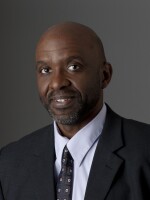Following up on its recent report on the ever-widening ideological gulf between Americans, the Pew Research Center unveiled its latest sorting of voters into categories based, in part, on the relative strength or weakness of their partisan attachments.
Not only that, Pew also has an online quiz of 23 questions that allows you to find out where you fit among its eight categories or types (Pew uses the fancy word "typologies"). They are: Steadfast Conservatives, Business Conservatives, Young Outsiders, Hard-Pressed Skeptics, Next-Generation Left, Faith and Family Left, and Solid Liberals.
Some of the questions used to sort respondents seem to employ intentionally black and white framing in order to force respondents to pick a side that may not necessarily represent their true views.
Take Question 3, for example: "Which of the following statements comes closest to your view? This country should do whatever it takes to protect the environment, or This country has gone too far in its efforts to protect the environment." It's possible to disagree with the second choice without fully embracing the first.
Question 14 does something similar: "Which of the following statements comes closest to your view? The best way to ensure peace is through military strength, or Good diplomacy is the best way to ensure peace." What if you believe that good diplomacy and a strong military are equally essential? That's a very American view, actually. The eagle on the Great Seal of the United States grips arrows in one talon, a peace offering of an olive branch in the other.
That said, the typologies provide a new way to understand some old and some new cleavages in both the liberal and conservative camps.
Probably the two most interesting types are groups Pew calls "wildcards," because their attachment to the major parties is noticeably weak; the Young Outsiders lean right, the Hard-Pressed Skeptics left. One reflection of that is the surprisingly large percentage in either group (it's a majority in both) who hold both liberal and conservative values.
Michael Dimock, Pew's vice president of research, suspected many political observers would find the Young Outsiders' rightward tendencies surprising because the stereotype of voters their age (about half were between 18-39 years old) is that they're Democratic-leaning.
"They had a slightly Republican profile in 2012 and even more so in 2014," Dimock told It's All Politics. "That puts them well outside the caricature of that generation, the millennials who tend to, in a lot of ways, be more left of center."
The challenge for the Republican Party going forward, however, is that many of these Young Outsiders don't like it.
"They're clearly an uncomfortable fit for the party," Dimock said. "Most of them tell us they have an unfavorable view of the party, for crying out loud. They really don't seem to have a particular affinity in terms of identity or the broad sweep of what the party stands for. So they become a wildcard group."
Meanwhile, Democrats have their own challenges with the Hard-Pressed Skeptics. Like the red-leaning Young Outsiders, this Democratic-leaning group distrusts government.
But here's the weird thing: They trust the government when it comes to its ability to help the poor, which has a lot to do with these voters being in households with less than $30,000 in income.
"The best way to characterize these folks is they really dislike government; they think government can't do anything right, partly reflecting the fact that things aren't going right for them, so somebody must be messing up, right?" Dimock said. "But they don't want to cut the programs; they don't want to reduce the safety net. They're the ones who are in need of it."
The tension for them is that their conservatism is at odds with their personal finances. That group voted strongly for Obama in 2012 and were likely turned off by Mitt Romney's "47 percent" comment.
But in 2014, while a majority — 51 percent — say they intend to vote for Democrats in the midterm congressional races, 37 percent say they intend to vote for Republicans. "I think there's a lot of traction for the Republican Party to potentially pick up support from this group because of their level of frustration.
"This is a group that's probably going to be the biggest anti-incumbent voters because they're so frustrated that they just want change," Dimock said.
Perhaps the third most interesting group would be the Next Generation Left who, while reliably Democratic, mostly don't subscribe to the view that racism is what holds back the majority of African-Americans.
"They just aren't animated by the kind of Great Society vision so at the core of the Democratic Party's identity [especially Baby Boomers]," Dimock said. "Whether it be the battle for equal rights for African-Americans and poverty assistance programs, they're like, 'Done and done. Whatever.' Given the choice of paying for some of these programs and reducing the deficit, their priority would be reducing the deficit."
This is the 27th year Pew has conducted its typologies research in order to better understand the ideological nuances that go beyond simple Democratic and Republican categorizations.
Copyright 2021 NPR. To see more, visit https://www.npr.org.




